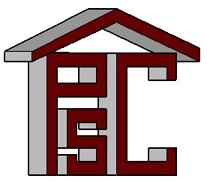 Residential solar panels are quickly becoming a way for the average homeowner to save money on long-term utility bills. The initial cost involved in building out a system of solar panels has dropped dramatically over the last five years. We now have a few different options, and each of those options comes with its own lists of pros and cons. That’s the direction I decided to take for today’s blog – pros and cons of different types of residential solar panels. I’ll stay away from making price points simply because the price of panels and equipment changes so often.
Residential solar panels are quickly becoming a way for the average homeowner to save money on long-term utility bills. The initial cost involved in building out a system of solar panels has dropped dramatically over the last five years. We now have a few different options, and each of those options comes with its own lists of pros and cons. That’s the direction I decided to take for today’s blog – pros and cons of different types of residential solar panels. I’ll stay away from making price points simply because the price of panels and equipment changes so often.
Polycrystalline Solar Panels: These are the most widely used because they are the least expensive and easiest to manufacture. They’re the bright blue solar panels that you often see on top of homes, small businesses, and even on motorhomes. Polycrystalline panels are slightly less efficient than monocrystalline panels, but not enough to make a huge difference.
Monocrystalline Solar Panels: These are slightly more expensive than polycrystalline panels, but they offer a little more efficiency and durability. They also perform better in low-light conditions. So if your overall goal is to be as efficient as possible and you don’t mind putting a little more money into it, monocrystalline is the way to go. Monocrystalline solar panels are solid black, unlike their blue counterparts.
Thin Film Solar Panels: These are growing in popularity because they’re very flexible and can be used nearly anywhere. They can be used on a backpack to charge your electronics while you’re hiking or biking, or placed in windows to supplement the electricity use in your home. This may not seem like a big deal, but each cell phone in your home uses approximately $25 per year for charging. It can add up in time.
Solar Shingles: These roofing shingles are integrated with thin film solar panels to create a roofing material that serves multiple purposes. It protects your home like regular shingles while providing a small amount of power, and looking pretty cool while it’s at it. Solar shingles aren’t terribly efficient yet, but they are a good indication of what we can expect in the future.
Solar is a great option for homeowners who are looking to lower their carbon footprint, improve the monetary value of their home, or even to go off grid entirely. You can set your solar power system up to feed into the grid – meaning you use the power you generate, but you sell what you don’t use to the power company. Or you can go off grid and store your own power in several batteries on your own property. Each option has great benefits and startup costs involved. It’s up to each individual homeowner to choose the option that is best for their lifestyle and their home.
Home Inspections in Gilbert
Give me a call at 480-570-5615 if you would like to schedule a home inspection for your home or a home you’re considering buying. Home improvement projects, such as the addition of solar panels on the roof, come with their fair share of things that can go wrong. A home with solar panels could appraise for a higher dollar amount, but if the previous homeowner has improperly installed the panels, there could be roof damage. Always hire a home inspector to check out a home that you’re planning to purchase to make sure you’re getting what you’re paying for.


Sorry, comments are closed for this post.